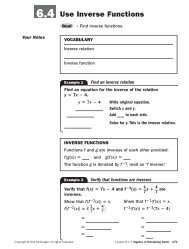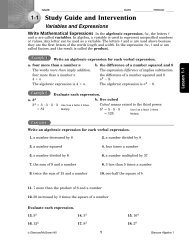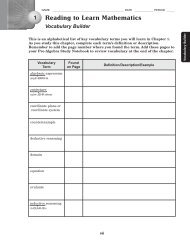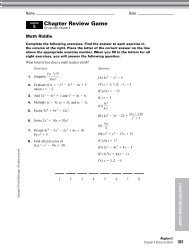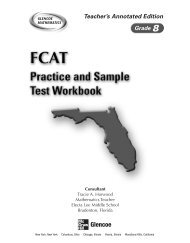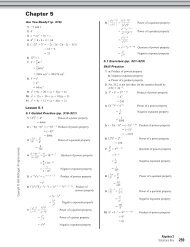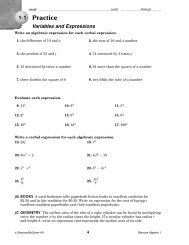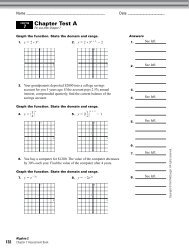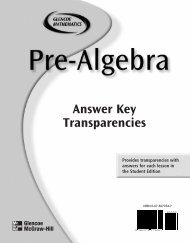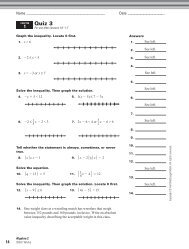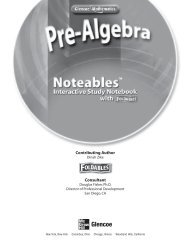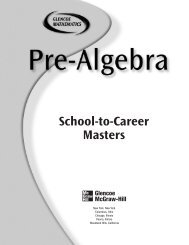real-world applications - MathnMind
real-world applications - MathnMind
real-world applications - MathnMind
You also want an ePaper? Increase the reach of your titles
YUMPU automatically turns print PDFs into web optimized ePapers that Google loves.
NAME _______________________________________________________ DATE _____________________________________<br />
REAL-WORLD APPLICATIONS<br />
STUDENT ACTIVITY for Transparency 10<br />
Use with Lesson 10-6.<br />
About Per Capita Personal Income<br />
Many statistics are generated about the income of workers in the United States. One important<br />
statistic is the per capita personal income. Per capita is an expression that means “for each<br />
individual.”<br />
The per capita personal income of workers is spent in a variety of ways. The income that remains<br />
after taxes is known as disposable income, money that may be spent or saved. In 2000, workers<br />
spent 12% of their disposable income on durable goods, 29% on non-durable goods, and 56%<br />
on services.<br />
Durable goods are manufactured items that are expected to last a long time such as automobiles<br />
and kitchen appliances. Nondurable goods are short lived and include items such as paper<br />
products, groceries, and petroleum products. Services include such things as haircuts, dry<br />
cleaning, and medical care.<br />
Directions: Use what you have seen and read to answer the following questions.<br />
1. In dollars, the per capita income of which state increased the most? The least?<br />
Massachusetts; Hawaii<br />
2. In percent, what was the increase in per capita income in your home state? What was the national<br />
percent increase? See students’ work; 51.4%<br />
3. Estimate the per capita income of your state for the year 2010. Explain how your estimate was<br />
generated. See students’ work.<br />
4. For a 10-year period, would you expect an increase or a decrease in per capita income? Explain your<br />
answer. See students’ work.<br />
Making the Connection<br />
5. Research what percent of the disposable per capita personal income earned by U.S. workers is saved.<br />
Speculate on the amount of money you may need to save for certain events in your future. Write a<br />
short paper explaining why it is important to put aside a set amount of earnings in a savings plan.<br />
See students’ work.<br />
© Glencoe/McGraw-Hill T10 Glencoe Algebra 1



